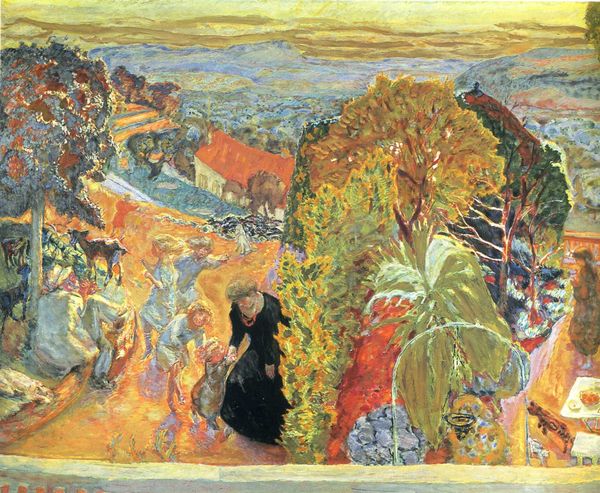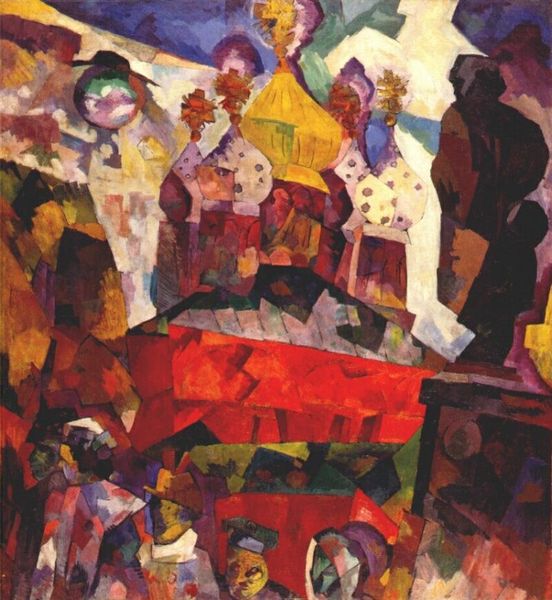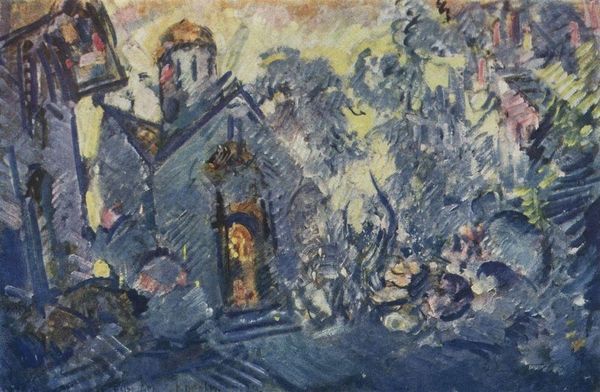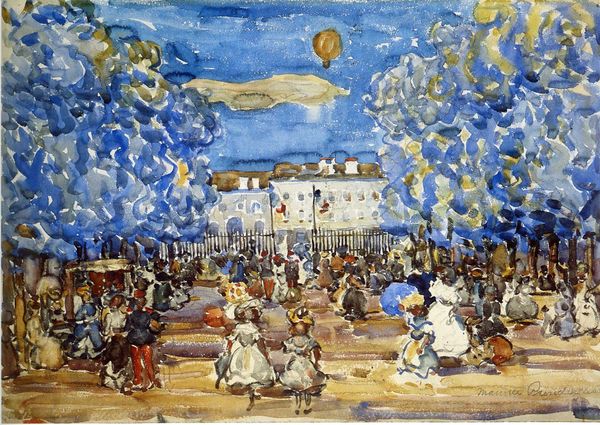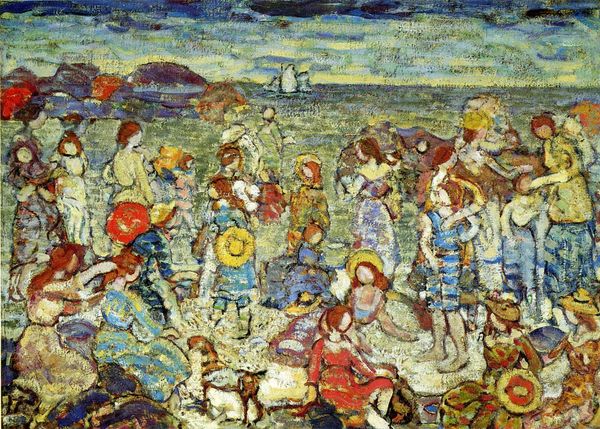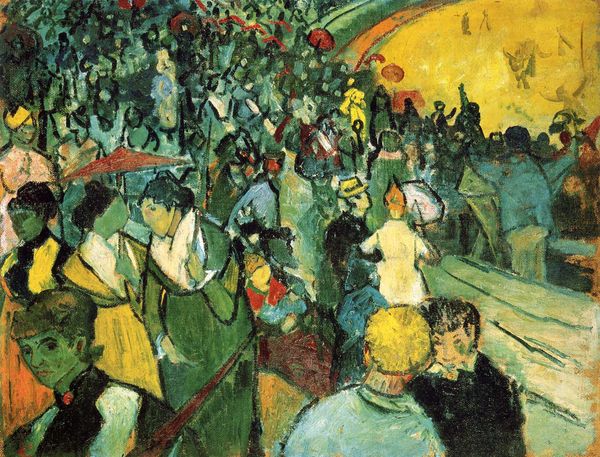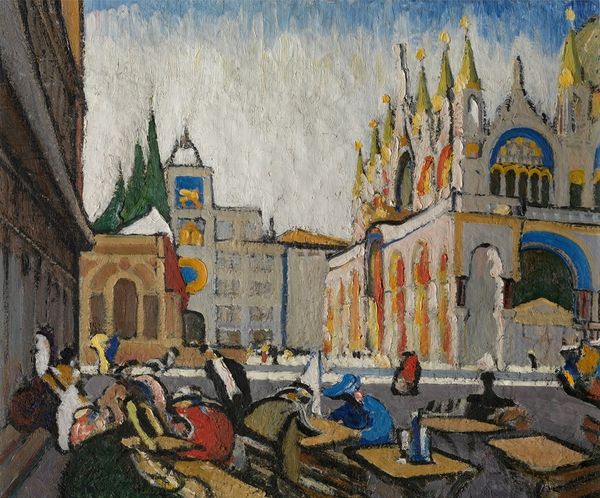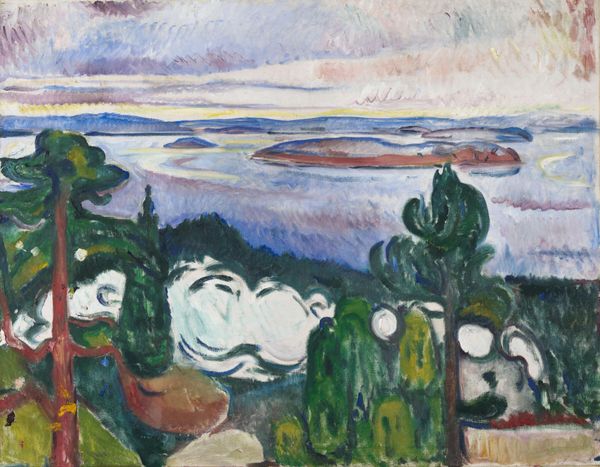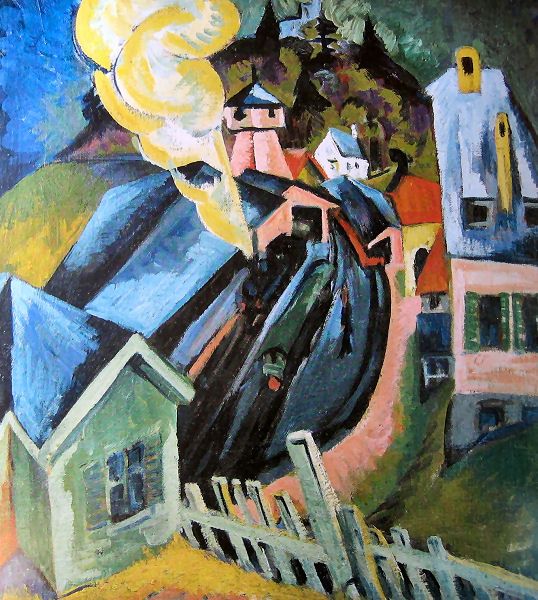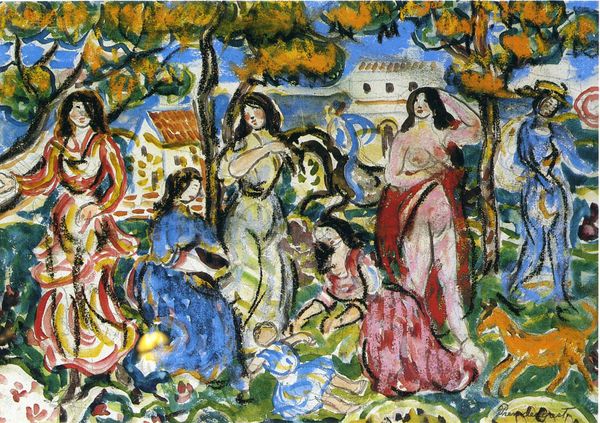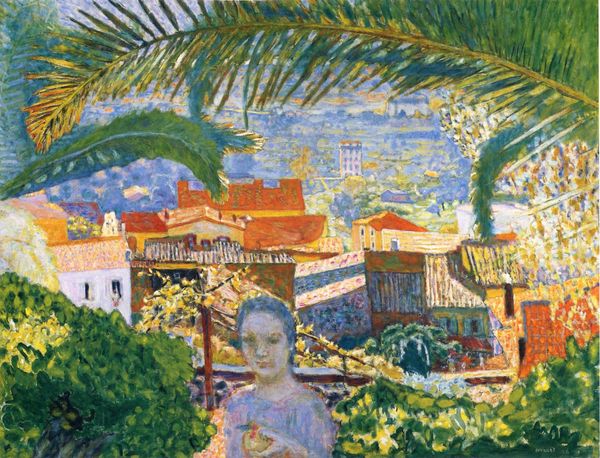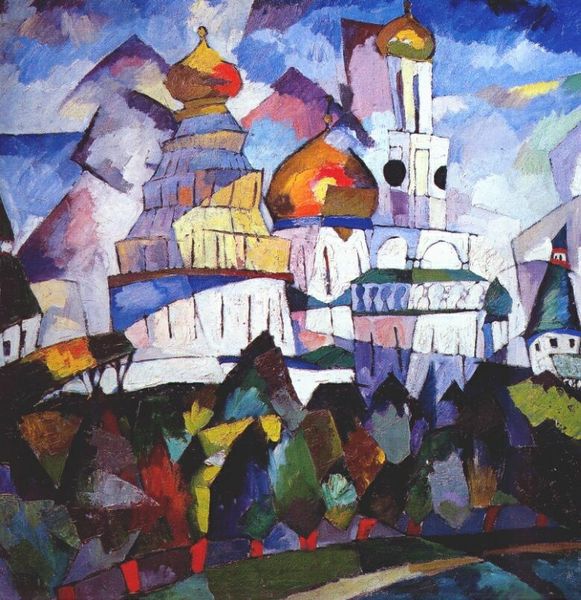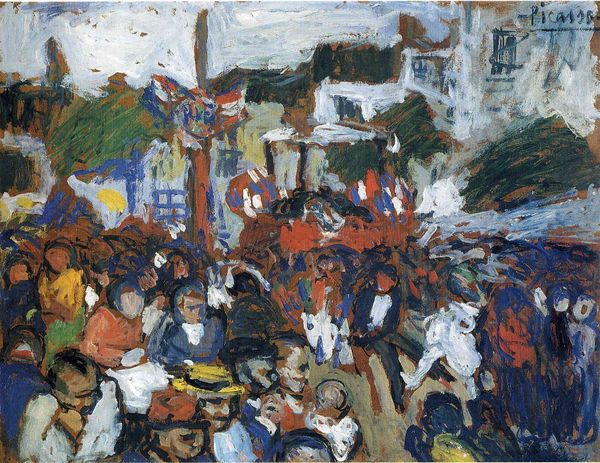
oil-paint
#
impressionist
#
oil-paint
#
landscape
#
impressionist landscape
#
oil painting
#
expressionism
#
cityscape
#
expressionist
Copyright: Public domain
Curator: Oleksa Novakivskyi created "The Cathedral of Saint George. A Poem of the World War" in 1922 using oil paint. It presents an expressionistic view of a cityscape dominated by a prominent cathedral. Editor: Immediately striking, isn't it? There’s an almost feverish energy in the brushstrokes. The architecture seems to heave and breathe. Curator: Yes, note the thickly applied paint. This impasto technique brings a certain tangible quality. You can almost trace the artist’s process – the labor involved in constructing the image. Editor: Absolutely. And that title, referencing the World War…it really forces you to consider the socio-political climate in which this work emerged. Were the materials themselves affected by the conflict? Curator: Possibly. The availability and cost of materials often reflect wider economic conditions tied to wartime efforts and trade embargoes. Beyond that, notice the colour palette: despite some light pastel areas, darker earth tones convey the sense of melancholy and oppression tied to collective memories of the World War. Editor: The placement of the Cathedral in such prominence…it reads as an almost defiant gesture in the face of devastation. A monument meant to symbolize resilience in a ravaged community. How do you imagine it resonated with its initial audience? Curator: That's interesting to think about. Considering that the image comes more than four years after the war had already ended, it must have touched on existing political divisions. What are the social meanings created when everyday life and institutional authority meet on canvas after trauma and loss? Editor: Exactly. So, we're not simply viewing a landscape. We are experiencing the symbolic struggle in shaping post-war public sentiment. Curator: That's a potent observation. Focusing on its materiality, what implications did Novakivskyi’s choices have in terms of art traditions and market forces present at the time? Expressionism afforded creative autonomy, yet what level of artistic license could an artist exhibit under prevalent socio-political conditions? Editor: Looking at how art shapes cultural narratives, this piece reminds me that art-making in its context involves making public memories about traumatic historic events. It’s quite moving. Curator: I concur. The interplay between raw materiality, artistic agency, and sociopolitical context creates a complex work of art that offers enduring food for thought about the relationship of war and artistic endeavor.
Comments
No comments
Be the first to comment and join the conversation on the ultimate creative platform.
